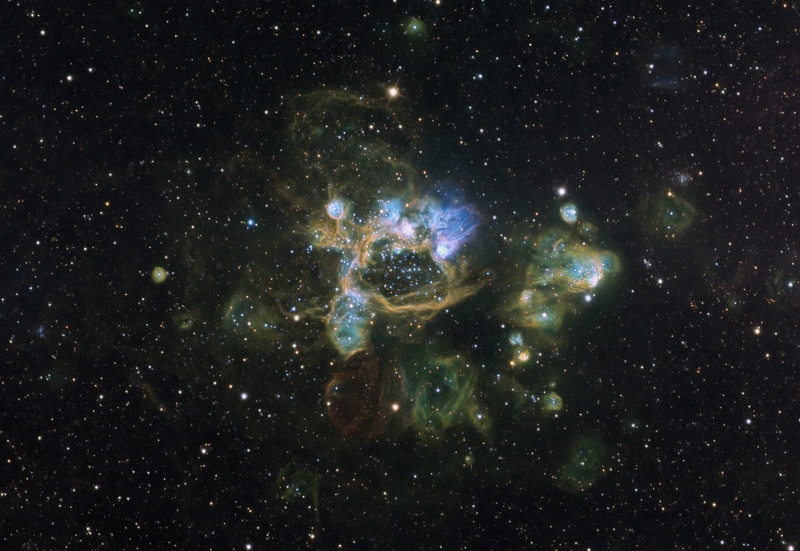
|
Credit & Copyright: Don Goldman,
Macedon Ranges Observatory
Explanation:
A truly giant complex of
emission
nebulae, N44 is about 1,000 light-years across.
It shines in southern skies as a denizen of our neighboring galaxy,
the Large Magellanic Cloud, 170,000
light-years away.
Winds and intense radiation from hot,
young, luminous stars in N44 excite and sculpt filaments
and streamers of the
glowing nebular gas.
But supernovae -
the death explosions of the massive short lived
stars - have also likely contributed to the region's enormous,
blown-out shapes.
The cluster of young stars seen near the center lies in
a superbubble nearly 250 light-years across.
This detailed, false-color view of the
intricate structures
codes emission from hydrogen, oxygen, and sulfur in shades
of blue and green.
|
January February March April May June July August September October November December |
| |||||||||||||||||||||||||||||||||||||||||||||||||||||||
NASA Web Site Statements, Warnings, and Disclaimers
NASA Official: Jay Norris. Specific rights apply.
A service of: LHEA at NASA / GSFC
& Michigan Tech. U.
Based on Astronomy Picture
Of the Day
Publications with keywords: LMC - emission nebula
Publications with words: LMC - emission nebula
See also:
- APOD: 2025 September 19 Á The NGC 6914 Complex
- APOD: 2025 September 10 Á The Great Lacerta Nebula
- APOD: 2025 July 21 Á Cats Paw Nebula from Webb Space Telescope
- APOD: 2025 July 16 Á The Rosette Nebula from DECam
- APOD: 2025 July 5 Á Ou4: The Giant Squid Nebula
- APOD: 2025 June 26 Á The Seagull Nebula
- NGC 6164: A Dragon s Egg
